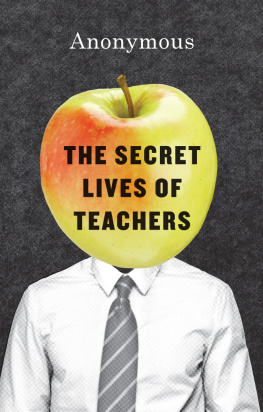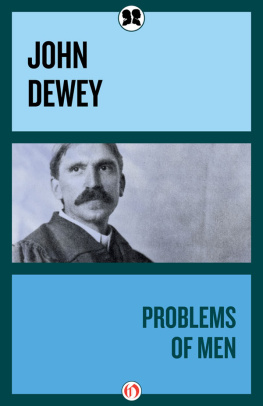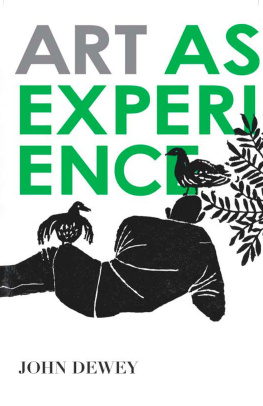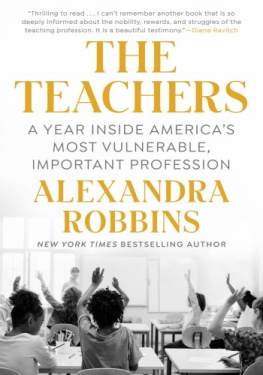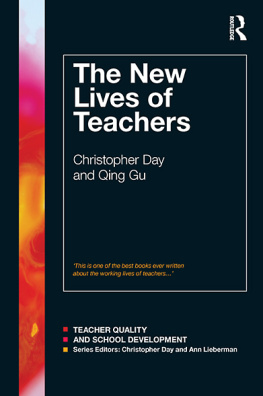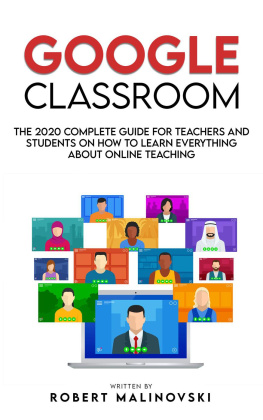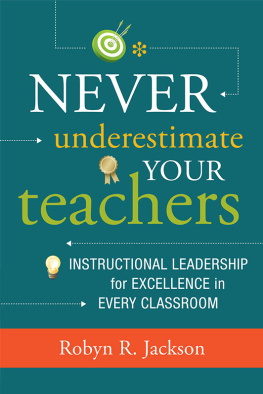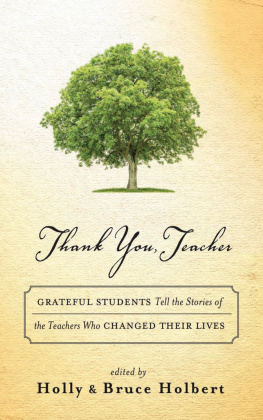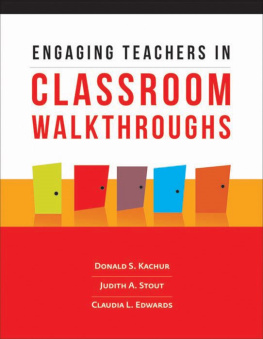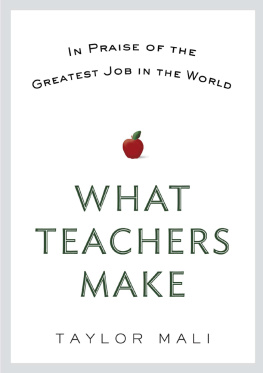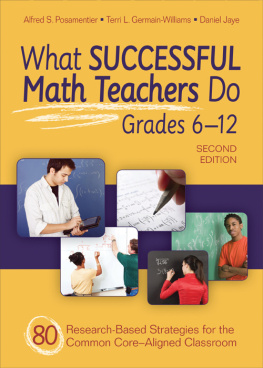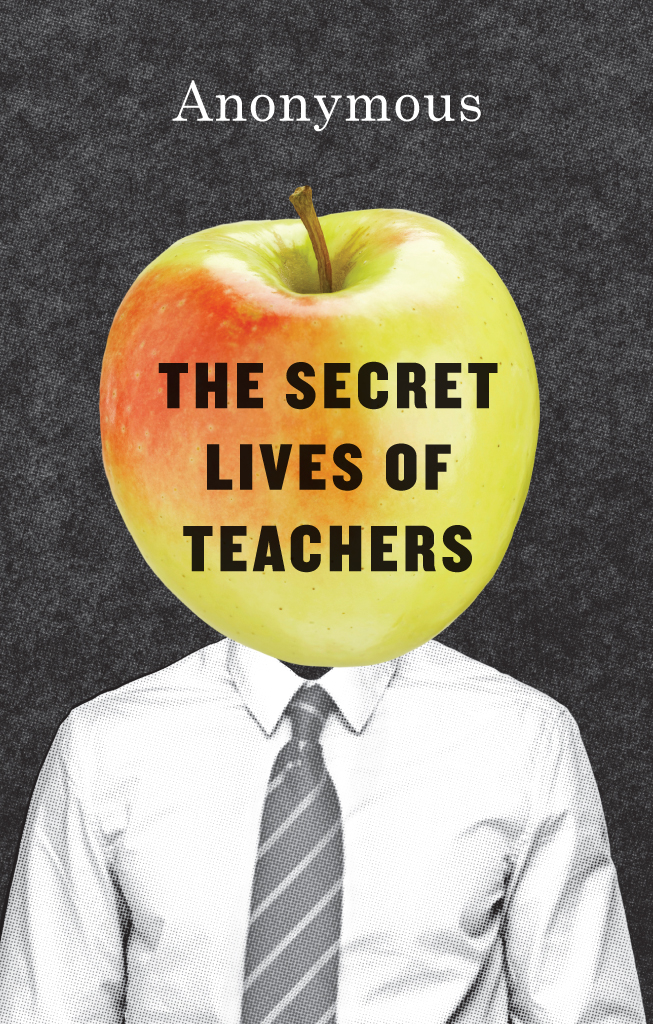The Secret Lives of Teachers
Anonymous
The University of Chicago Press
Chicago and London
Anonymous is a high school history teacher in New York.
The University of Chicago Press, Chicago 60637
The University of Chicago Press, Ltd., London
2015 by The University of Chicago
All rights reserved. Published 2015.
Printed in the United States of America
24 23 22 21 20 19 18 17 16 15 1 2 3 4 5
ISBN-13: 978-0-226-31362-7 (cloth)
ISBN-13: 978-0-226-31376-4 (e-book)
DOI: 10.7208 /chicago/9780226313764.001.0001
Library of Congress Cataloging-in-Publication Data
Dewey, Horace (Pseudonym), author.
The secret lives of teachers / Anonymous.
pages ; cm
Includes bibliographical references.
ISBN 978-0-226-31362-7 (cloth : alk. paper) ISBN 978-0-226-31376-4 (ebook) 1. High school teachersNew York (State)New York. 2. Private schoolsNew York (State)New York. I. Title.
LB1777.3.N4D49 2016
373.110209747'1dc23
2015020385
This paper meets the requirements ofANSI / NISO Z39.481992 (Permanence of Paper).
To the memory of
THEODORE R. SIZER (19322009)
Horace lives
The subordinate stature of classroom teachers is vividly symbolized by the roster of participants in these recurring academic brawls; the amplified voices have belonged to university presidents, freelance writers, eminent scholars, professors of education, leading citizens and even an admiral of the United States Navy. But who recalls hearing the opinions of a classroom teacher?
Dan Lortie, Schoolteacher (1975)
Contents
I greet you anonymously, dear reader. But as a practical matter, I need an identity for the pages that follow. I therefore declare myself Horace Dewey, history teacher at (fictive) East Hudson High School in New York City. As you will surely surmise, my pseudonym has symbolic significance. Dewey is an act of homage to John Dewey, the twentieth-century patron saint of progressive education (and a man whose influence remains vast, whether or not teachers work at progressive schools or even think of themselves as progressive). You might think that Horace is a nod toward Horace Mann, the nineteenth-century architect of the modern public school system, an allusion I wont disavow, as I am an admirer of his. But my first name is actually a tribute to the protagonist of Theodore R. Sizers renowned Horace Trilogy, published between 1984 and 1996 and still widely discussed in educational circles to this day.
Though this is not a work of sensationalism or settling scores, it is one where I am more candid than is generally politic for a working teacher. More importantly, I have the privacy of students to protect. That is why names, situations, and identities in the following stories, set in the Obama era, have been changed or scrambled. I have also resorted to outright invention in some cases, though everything I describe here is rooted in more than a quarter-centurys experience of classroom teaching, as well as some of the educational research cited in the afterword. My credibility lies in the truth of my storytelling.
H.D.
The Secret Lives of Teachers
Working Propositions
For many years, my colleague Bob Oros offered a history elective at my school called The Working Class. The course covers an enormous range of territory, from the Spartacus Revolt in the Roman Republic to contemporary sweatshop labor. But more than anything else, Bobs class is an experience in what might be termed urban anthropology. His first assignment calls for students to go forth into their respective neighborhoods and observe people working. Upon identifying an occupation and a worker willing to talk, students are required to interview that person and take some pictures. They are then to produce a photo essay about the workers occupation, with captioned pictures of the workers in action. Years ago, students used disposable cameras; nowadays they use their phones.
This assignment struck me as a good idea in the abstract. But the finished products I saw were stunning. I say this not because the quality of student work was so good (though there were many fine projects) but rather because the implicit message of the assignment was so palpable: there is simply no such thing as unskilled labor. The workers who came to life before my eyes in this assignment didnt necessarily love their jobs. But even seemingly simple occupations proved to have complications and nuances that arent obvious when, say, youre ordering a burger and fries (be careful not to do X; always make sure you do Y, but not if theres a Z involved). Ive never looked at work in quite the same way since. Nowadays I often try to strike up conversations with the workers I encounter on any given day and query them about the nature of their routines unless its obvious, even to me, that doing so is making me a pain in the ass.
Bob has another assignment in which students are asked to write a paper tracing the existence of a consumer product back to its source. One student chose a custom-made shawl that his mother and a few colleagues had chipped in to buy for a colleague recently diagnosed with cancer. He went to the boutique in midtown Manhattan where it had been commissioned, talking with the owner and manager of the store and following them into its back rooms, where immigrants from Taiwan and mainland China, laboring long hours in a high-end business, spoke with what he described as a vague sense of escape in their voice. He heard a story from a manager of the seamstresses, a woman who had tried to start a business in China but could not succeed because of her gender (she described one customer who simply walked out upon learning that the store was hers). The student also heard about a worker whose health problems slowed her down but whose colleagues covered for her until she left the company to care for a grandchild. Toward the end of the piece, he turns his attention back to the final product. A turquoise shawl lays across the table in the show room, he wrote. There are bright colors that scream for attention all throughout the room and it looks like it belongs. Made of cashmere, it is exceptionally soft. It is warm, yet not overly hot. Finding the seams that keep it together is a job for Scooby Doo and the gang. The perfection was not easy to achieve, but it has been. Not bad for a high schooler. But I suppose I would think so: the student is my son.
I mention Bobs class, and my sons experience in it, by way of explaining how it is that I am now trying to explain my own job. Its not any more fascinating than anybody elses. But I now believe all jobs are of intrinsic interest, because theyre always about a great many more things than whatever task is at hand. The trick a piece of work in its own right is figuring out a way to get at those things, whether they involve geopolitics, shifts in public attitudes, or the compromises that sometimes must be made in balancing conflicting imperatives.
Finding the right mode of discussion is a particularly vexing challenge in the case of teaching. Unlike some occupations, it engenders a good deal of curiosity. A lot of people have ideas about teaching, and a lot of those ideas involve how to get teachers to do their jobs better. Or how to find more good teachers. Or how to get around the need for them. Theres nothing inherently wrong with any of this; many people engaged such enterprises have honorable motives. The problem is that relatively few of them have ever been teachers themselves (and almost by definition these few have not been teachers for any length of time reformers are often too busy working on systems to actually perform the workaday tasks of teaching). And while its possible for nonteachers to understand what teachers do all day, identifying and retaining good ones is more than a matter of monitoring the results of standardized tests.

